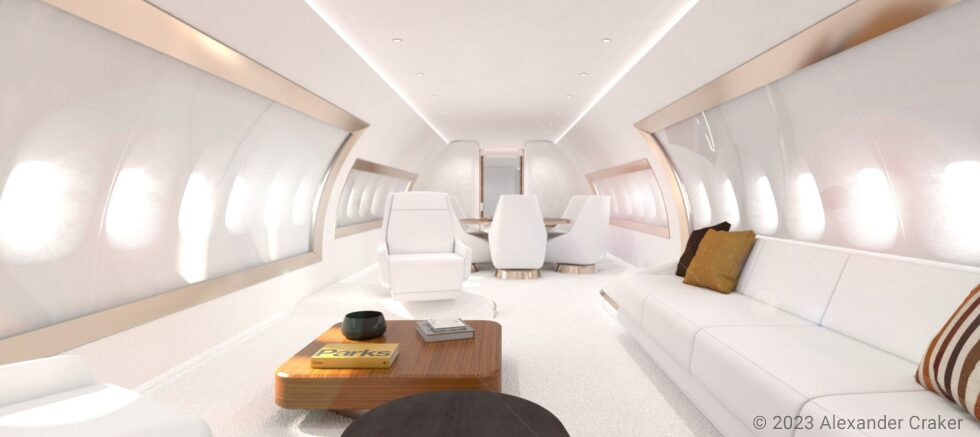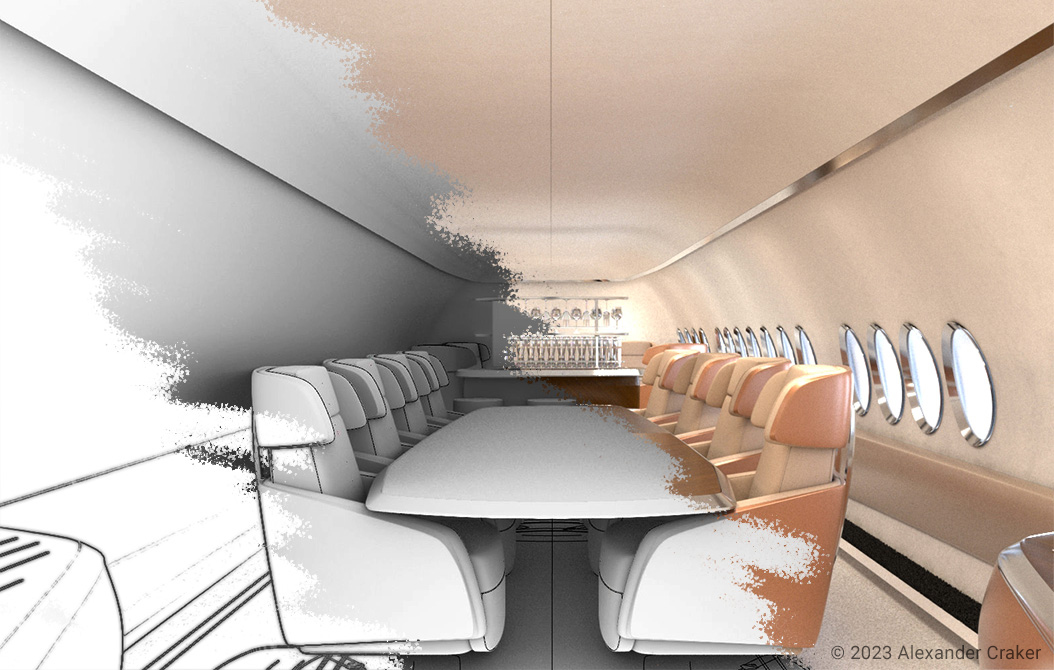The process of transforming a client’s vision into a fully realised, beautifully outfitted jet can be complex and demanding as there are many specific factors to consider – any of which can derail the entire project if approached incorrectly. However, using a professional completion management service to oversee the process can transform what might feel like an arduous journey into something closer to a chauffeur-driven trip in complete comfort – enjoyable while it lasts, with a rewarding outcome at the end as you take ownership of your perfectly designed aircraft.
In this article, we’ll take a deeper dive into the process of realising a client’s vision and transforming abstract concepts into reality. Picking up after the aircraft has been selected, we’ll look at the next stage of the process: how the designer and completion manager work together with the client to merge beauty, function and innovation into a stunning design, ready for the construction phase.
Concept Phase
A completion manager will have discussed the client’s functional requirements and helped them to select the correct aircraft for their needs. From this, crafting a conceptual design is the next step on the journey, resulting in rough sketches being produced, then refined in order to meet a client’s requirements whilst taking into account the aircraft’s specifications and existing configuration.
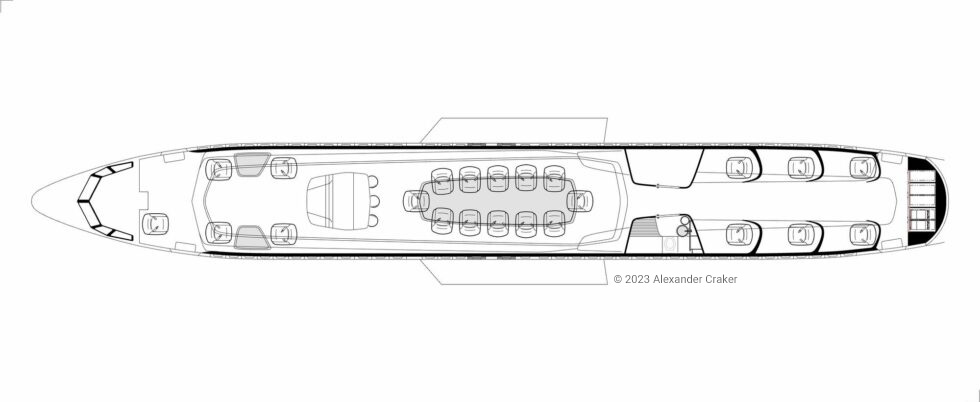
To achieve this, the designer must begin the concept phase by listening to the client and ensuring they fully understand their functional requirements, alongside their lifestyle, taste and vision for the project. Discussions that focus on a client’s hopes and dreams may seem irrelevant to the casual viewer but are essential for understanding them on a fundamental level, allowing the designer to build the project around the identity of the client.
These early discussions are used to create visual representations of ideas and explore potential directions and concepts during the project’s initial stages. This is then followed by strategic discussions between the completion manager and with project stakeholders such as operations, flight and cabin crew to establish parameters and technical requirements, as well as their insights, based on their own extensive experience.
This enables the design process to advance, allowing the completion manager to begin estimating the scale of the project – including costs and projected time frame before the client can take ownership of their jet. During this period the design brief is created, allowing the design process to begin. At this point, several factors resulting from the initial discussions must be considered and integrated into the design.
Layout
The designer will begin creating basic concepts for you to be able to visualise the layout and identify which aspects work well and which may need to be reworked or refined.

Developing the interior architecture includes defining the volumes and configuration of the cabin space. When planning the layout, the designer will take the needs of the space into account when defining boundaries between working, entertaining, private and personal areas.
The way people move through and use the available area is critical: walking about the interior should be enjoyable and not feel cluttered or complicated. This means the designer needs to think about how each person will interact with the space created. Interior design ideas can be hard to use in aviation because space and ergonomics are so important, and the architecture makes it difficult to arrange furniture the way one usually does. The most important thing is to provide a space that can change and adapt to your personal concept of “living”

Styling
When you fly, you get a whole new perspective on the world below you, and in a world where people frequently visit new places and learn about other cultures, you naturally develop an appreciation for a wide range of aesthetics. The interior design process will take your way of life, the space’s intended function, and the desired mood of the finished product into account, incorporating these elements into the space. From there, the designer may draw inspiration from the home, yacht, or car of the client, or they may choose a completely different and innovative route to surprise you.

Finishing
The designer will work with you to capture the desired “feel” of the interior and explore ideas for wall and floor finishes, including panelling details and joinery in natural, artistic, and three-dimensional modelling. These preliminary ideas are developed in a variety of media, including hand-drawn perspectives, computer models, and sample boards outlining materials and appearances, allowing you to experience these aspects both visually and sensorily to choose the best possible finishes.

When you’ve identified your preferred elements of the interior layout, styling, material, and finishes, the designer will create additional ideas and sketches to create a set of preliminary design concepts, complete with interior viewpoints and design details. Another review will follow and, depending on the number of concepts, these will be further shortlisted before selecting a final design concept.
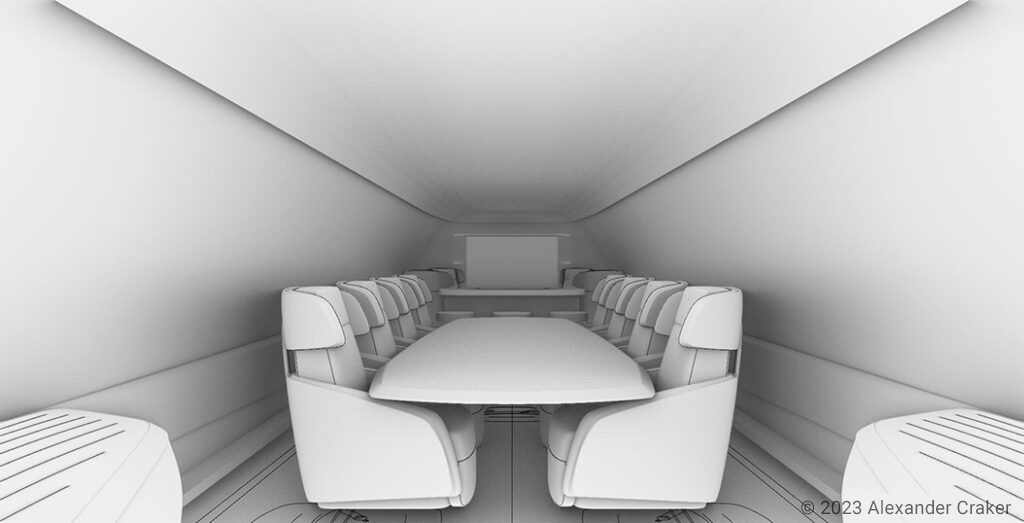
3D Modelling
You’ll then discuss these concepts, sketches and samples with the design and completion management team, and the designer will identify your preferred elements. From this, they’ll build a shortlisted set of preliminary design concepts, utilising the selected architecture, styling, material and finishes.
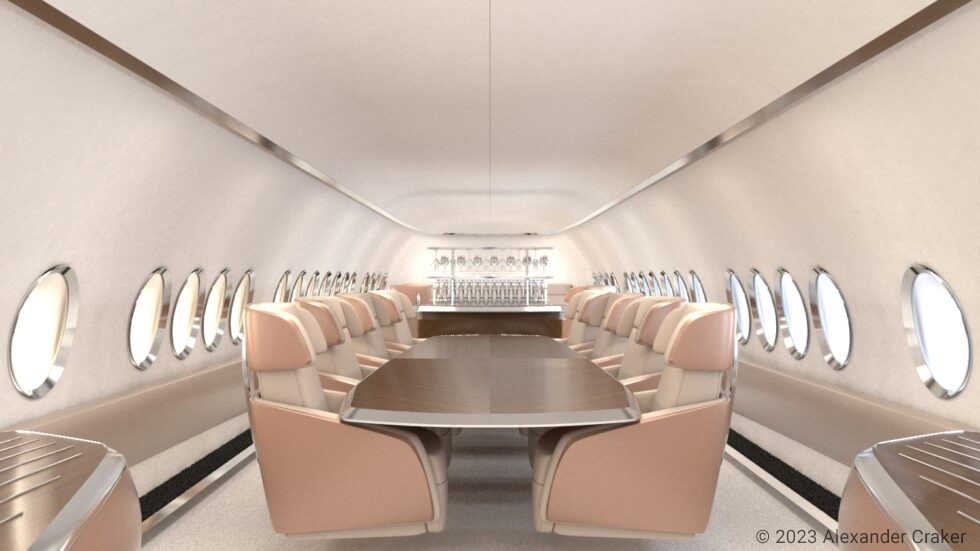
After a final design concept has been chosen, three-dimensional digital and scale models can be developed. 3D digital modelling enables you to evaluate the chosen designs in various environments and lighting conditions, allowing rapid modifications to be made to explore options using photorealistic illustrations. Using a scale model helps the final design to be observed and comprehended so that surfaces, finishes, lines, and folds can be better appreciated in natural light. In addition, they provide a physical form that cannot be duplicated in terms of scale, size, and shape appreciation whilst offering you the ability to physically interact with them in order to comprehend diverse angles and perspectives. Before beginning the design phase, this presentation gives you a deeper understanding of the general appearance and feel of the interior design.
Selected Concept
Once the client and design team have together decided upon their favourite elements from the interior architecture, styling, material and finishes, further ideas and sketches are then created from this shortlist to develop interior viewpoints and design details to create a set of preliminary design concepts. At this point there is a further review with the client, depending upon the number of concepts, these will be further shortlisted prior to selecting a final design concept.
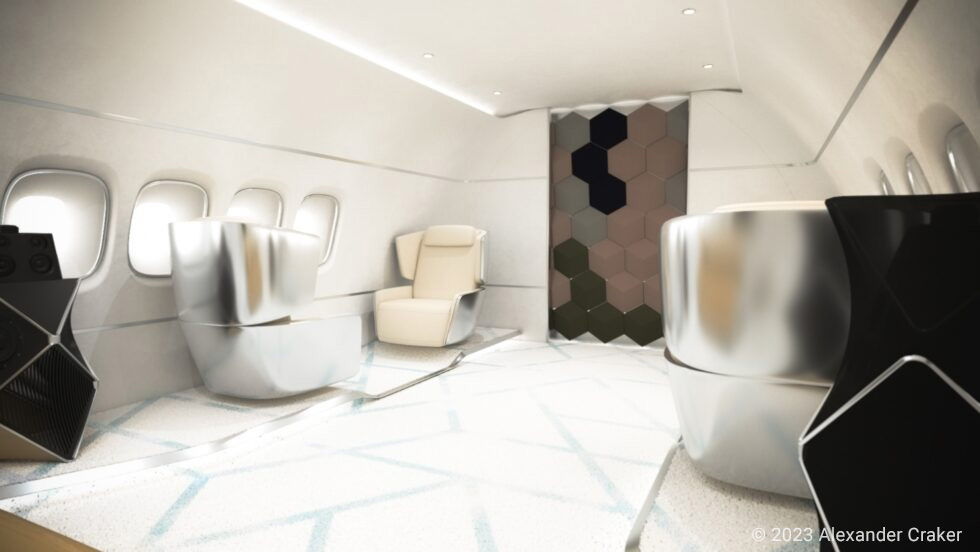
Digital modelling
When the final design concept has been selected, the development of three dimensional digital & scale models can begin.
Digital modelling using CAD (Computer Aided Design) offers the possibility to evaluate designs in different environments and to explore changes quickly together with photo-realistic visualizations. To better grasp surfaces, lines, and creases in the final design, it is helpful to use a scale model and view it in natural light.
To really grasp proportion, size, and form, nothing beats the physicality of a scale model. One benefit of using scale models is that both designers and clients may get a hands-on experience with the product, expanding their understanding of the project from multiple perspectives.
This process allows you to get a comprehensive understanding of the proposed design and the look and feel of the interior. This is critical before moving onto the Design phase to ensure that your expectations are met at all stages of the process.
As such, the Concept Phase includes the initial stages of the design process in which rough sketches are created in collaboration with project stakeholders, then shortlisted according to your wishes.
Your designer will seek to achieve a design that meets all of the aircraft’s requirements, including performance, structural systems, control systems and more. In addition, the design and completion management team will consider elements such as the shape of the aircraft’s fuselage, wing location and engine size whilst taking into account any other legal or regulatory stipulations in order to craft an evolved concept around your requirements.
Design Phase
After completing the conceptual design, the design phase includes condensing the preferred ideas and concepts into a final, definitive plan. During this phase, your completion manager and designer will review the chosen concepts and identify any potential issues to be corrected before creating a final definitive document.
The final design should follow a clear consistent, uniformly applied concept to the interior space, with an overarching theme that all of the interior design decisions are based on. Finding the sweet spot between originality in design, precision in engineering and reliability in manufacturing is essential and every aspect of the aircraft interior is considered to ensure these elements are seamlessly integrated into the completed aircraft.
Information that must be incorporated in a detailed design plan includes:
Scope of Work (SOW)
A specification document describing the amount of detail and quality that must be maintained throughout the process of outfitting, defining the required performance of each of the systems, mechanisms, material finishes, fittings and products used in the build. These criteria are broken down into four categories that together form the final product.
Technical specifications: the technical standard describes air conditioning, humidity, electricity, communications, security, water and waste, lighting, and entertainment systems, coupled with in-depth supplier and product research.
Interior specifications: All of the material finishes (including wood veneers, specialised glass, and soft furnishings like wall and floor coverings) are listed and described in the document.

Performance specifications: This outlines the required levels of performance and the standards to which the aircraft must be built to meet acceptance criteria.
Operation specifications: This outlines the fundamentals, including: the cabin outfitting agreement, the schedule, and the costs involved, as well as incentives and penalties for early or late completion and delivery of the outfitted aircraft
Detailed Diagrams
A complete set of exact scaled drawings including plans, sections, elevations, reflected ceiling plans and joinery details is generated. Once a completion centre has been selected to carry out the project, your completion manager will hand over the diagrams and oversee the conversion into production and installation diagrams, from which the interior cabin will be constructed.
Essentially, the design phase encompasses the transition from initial concepts to a finalised plan to be given to suppliers and completion centres to allow them to provide quotes and ask for any further information before proceeding to the negotiation and implementation phase.

Following the completion of the detailed design phase, the drawing package specification document and scope of works will be submitted to the main contractor for final cost analysis.
Any changes that are needed to suit budget constraints or special manufacturing requirements will be made at this stage prior to the final sign-off and approval from the client.
Whilst this might be the end of the design process, there’s still much more to be done before your bespoke private jet is completed and ready for her first flight. Your completion manager will advocate for you while overseeing the project to completion. This includes tasks such as: creating finalised requests for proposals, managing supplier requests for information and negotiating with vendors, suppliers and completion centres on your behalf – all before the construction phase of the project begins! However, the concept and design phase is often the most meaningful for many clients as it is specifically centred around your prerequisites and gives you the opportunity to design your perfect private jet.
A good completion manager and designer will work together as a team to understand your aesthetic and functional requirements and translate this into a design that is more than measurements or diagrams, or materials. A good design takes the seed of an idea and creates something transcendent – an environment that offers everything you need in a beautiful and sumptuous space at 40,000ft.
